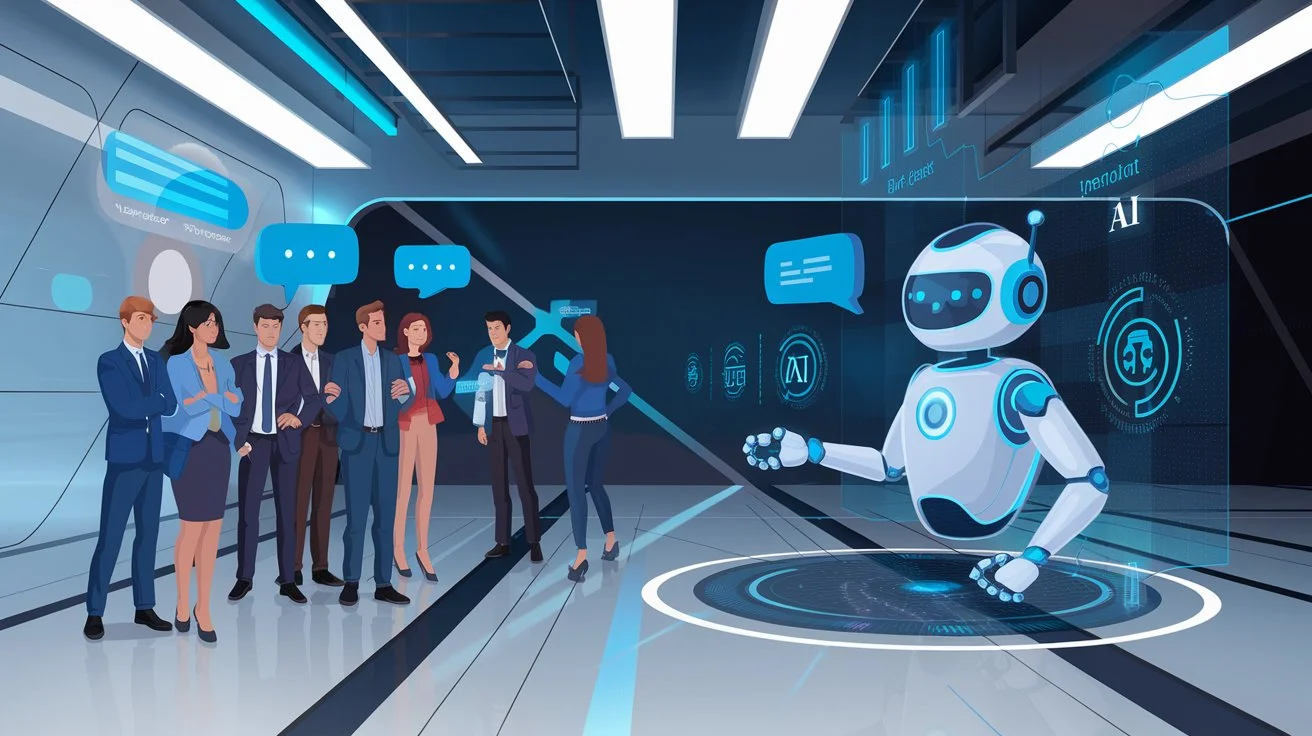Artificial Intelligence in Customer Service: How to Use It Effectively

What is AI in customer service?
Artificial Intelligence (AI) in customer service refers to incorporating advanced technologies like machine learning, natural language processing (NLP), and data analytics to improve and streamline the customer service experience. These tools let businesses to provide faster, more personalized, and proactive support while improving efficiency and reducing costs.
With AI-powered solutions, companies can embed intelligent chatbots, automate repetitive tasks, analyze customer sentiment, and predict customer needs. Beyond answering common questions, these tools can greet customers, serve up knowledge base articles, guide them through processes, send field technicians for on-site requests, and seamlessly route complex issues to human agents.
According to Sprinklr, some of the forms AI is used in customer service are as follows:
- Chatbots and voice bots
- Text analysis
- Speech and voice analytics
- Sentiment analysis
- Agent assistance
- Quality management
- Workforce management
Benefits of AI in customer service
Here are six key benefits of leveraging AI in customer service:
1. Higher productivity
AI tools, like Sprinklr Service, empower service teams to complete tasks faster. By acting as an intelligent assistant within the agent’s workflow, AI can:
Provide real-time recommendations.
Automate repetitive tasks like ticket categorization and routing.
Increase agent productivity by 14%.
2. Improved efficiency
Manual processes like switching between systems, searching for information, and typing responses can be time-consuming and error-prone. AI streamlines these tasks by:
Providing intelligent suggestions based on knowledge bases.
Offering conversational insights and customer data in real-time
3. Personalized interactions
AI delivers personalized experiences by leveraging customer data. For example:
When a chatbot initiates a conversation, it can automatically populate the customer’s name, location, account type, and preferred language.
AI sends detailed customer information if a field technician is needed, enabling a tailored service experience.
4. Optimized operations
AI analyzes customer interactions to identify patterns and trends, such as:
Common reasons for escalations.
Time required to resolve issues.
Opportunities to improve the customer journey.
Businesses can use generative AI to create knowledge-based articles based on historical cases, improving agent efficiency and self-service options.
5. Reduced burnout and improved morale
By eliminating repetitive tasks, AI allows agents to focus on complex problem-solving and customer engagement. This shift reduces workload, prevents burnout, and improves team morale.
6. Proactive service
AI allows businesses to anticipate customer needs by:
Drawing insights from contracts, warranties, purchase history, and more.
Notifying customers about subscription renewals, maintenance reminders, or product upgrades.
Ways businesses can use AI in Customer Service
1. AI-powered chatbots for instant support
AI chatbots leverage NLP and machine learning to provide real-time assistance. Unlike scripted bots, AI chatbots offer human-like interactions and handle complex queries.
Example:
A telecom company’s chatbot guides customers through upgrading their plans, providing personalized options without human intervention.
Pro Tip:
Integrate chatbots with your CRM to access customer data for personalized responses. Regularly update AI models to enhance performance.
2. Predictive customer service using AI analytics
AI tools for customer service analyze data to predict customer needs or issues before they occur, enabling proactive support.
Example:
A retail company identifies a pattern of installation-related queries and proactively sends guides to customers who recently purchased the product.
Pro Tip:
Collect diverse data points and regularly refine predictive models using AI tools to stay relevant.
3. AI-enhanced self-service portals
These portals enable customers to resolve issues independently. Features like intelligent search bars and interactive guides provide quick solutions.
Example:
A software company’s portal suggests resources based on users’ past queries and product usage.
Pro Tip:
Design intuitive interfaces and continuously improve the portal based on user interactions.
4. Automated ticketing systems
AI-driven ticketing systems categorize and route customer inquiries based on context and urgency.
Example:
A financial services firm uses AI to route fraud-related tickets to the appropriate department, ensuring faster resolution.
Pro Tip:
Train AI models on past tickets to improve accuracy in categorization and prioritization.
5. AI-driven sentiment analysis
Sentiment analysis helps gauge customer emotions from feedback, reviews, and interactions, enabling timely responses.
Example:
A restaurant chain identifies negative sentiments about wait times and takes corrective action.
Pro Tip:
Train AI on diverse datasets to understand language nuances and integrate sentiment analysis with CRM systems.
6. Real-time language translation
AI enables seamless communication across languages, making global customer support more accessible.
Example:
An e-commerce platform uses AI to translate real-time queries and responses between customers and agents.
Pro Tip:
Choose a translation system that understands cultural nuances and regularly updates it with new languages.
7. AI-enabled personalization
AI uses customer data to provide tailored recommendations and solutions.
Example:
A streaming service offers personalized content suggestions and resolves technical issues based on viewing history.
Pro Tip:
Be evident about data usage and offer customers control over their preferences.
8. AI-assisted quality control and training
AI evaluates customer interactions to ensure quality and identify training needs.
Example:
A telecom company analyzes call recordings to tailor training programs for agents.
Pro Tip:
Balance AI insights with human judgment for nuanced situations.
9. Handling high-volume interactions
AI manages peak traffic by responding to multiple queries simultaneously.
Example:
An airline’s AI system handles holiday season inquiries, reducing wait times and escalating complex issues to agents.
Pro Tip:
Train AI with updated information and ensure seamless handoffs to human agents.
10. AI-driven customer journey mapping
AI maps customer interactions across touchpoints to identify pain points and opportunities for improvement.
Example:
An online retailer simplifies its checkout process based on AI insights about cart abandonment.
Pro Tip:
Collect data across all touchpoints and update AI algorithms as customer behaviours evolve.
The future of AI in customer service
AI transforms customer service by enabling faster, more intelligent, and more personalized interactions. As technology advances, its potential applications will only grow, driving greater efficiency, customer satisfaction, and loyalty. For businesses, adopting AI is no longer a luxury but a need to stay competitive in today’s customer-centric world.
